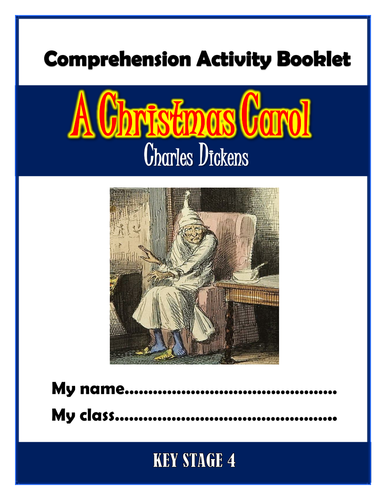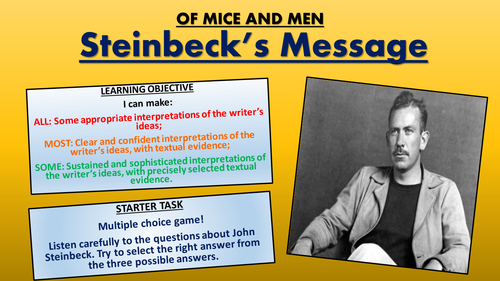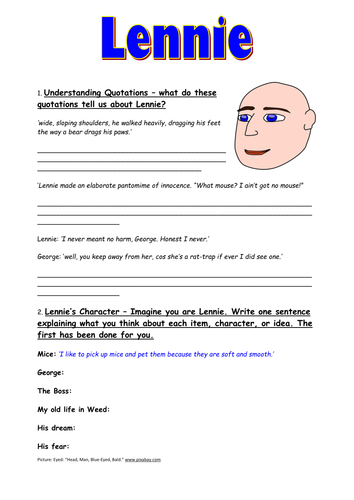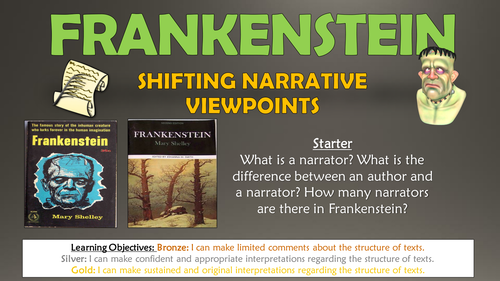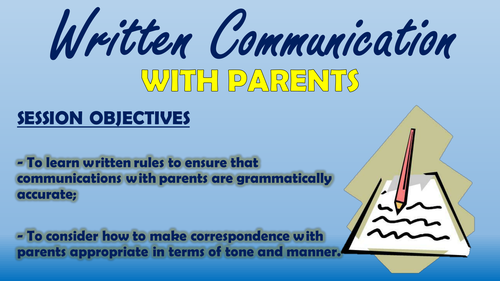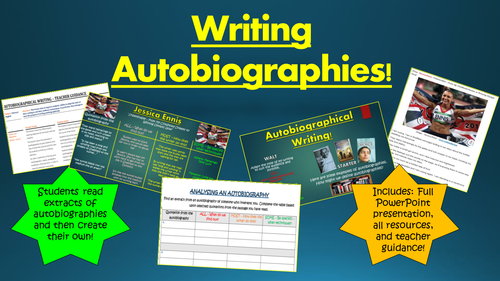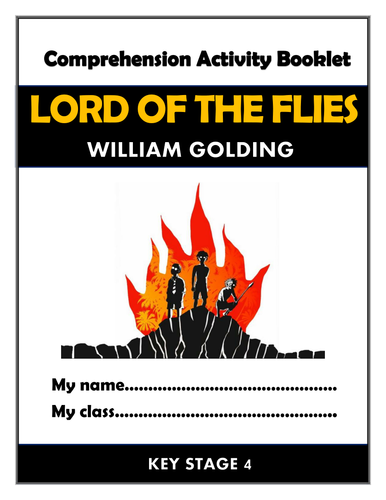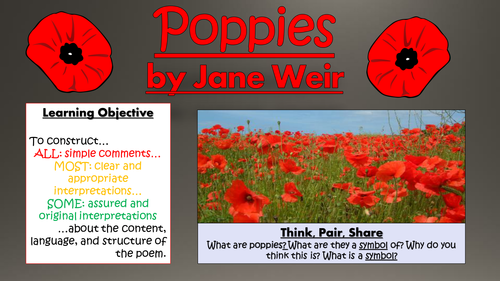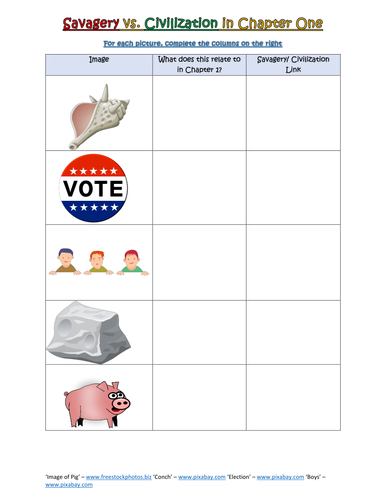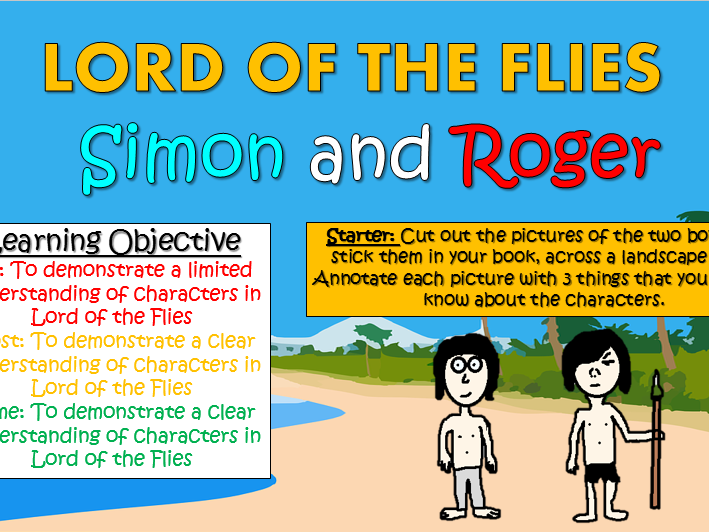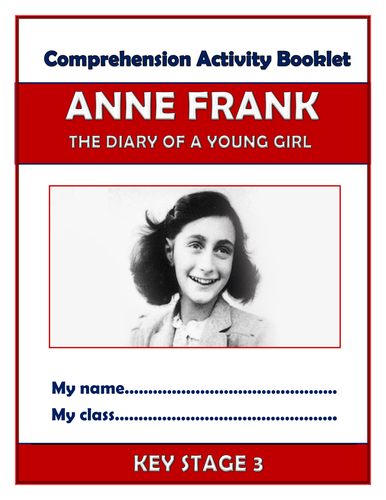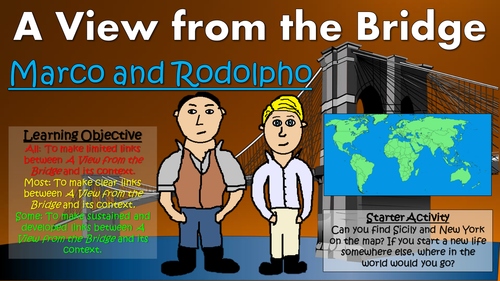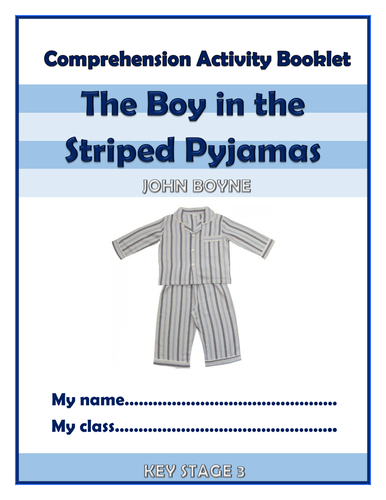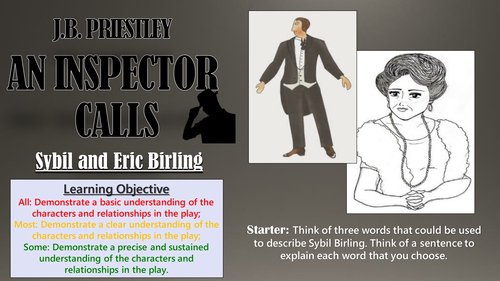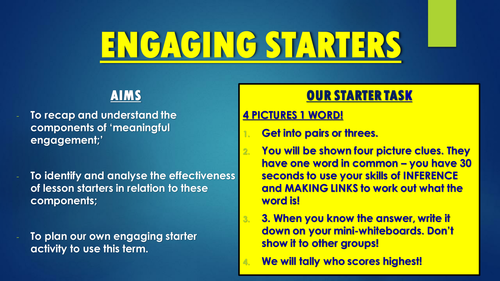
3k+Uploads
1915k+Views
2245k+Downloads
Pedagogy and professional development

A Christmas Carol Comprehension Activities Booklet!
This resource booklet contains a wide range of age-appropriate, engaging, and meaningful comprehension activities for use throughout the reading of Charles Dickens' 'A Christmas Carol.' Teachers have found them particularly useful in exam revision, comprehension tasks, or guided reading sessions. They are perfect for aiding the progress of students towards meeting the KS4 expectations within the new National Curriculum framework - this makes the tasks suitable for all examining bodies. Students have found these resources extremely engaging, and for teachers there is explicit information within each task regarding which comprehension strands the task is designed to demonstrate. They also relate to key extracts, characters, and themes from the story, ensuring that students gain a deep understanding of the text.
Activities within the booklet include:
- 'Context: 19th Century Britain' - to aid students with 'Drawing on knowledge of the purpose, audience and context of the writing, including its social, historical and cultural context and the literary tradition to which it belongs, to inform evaluation;'
- 'Dickens' Description' - to aid students with 'Analysing a writer’s choice of vocabulary, form, grammatical and structural features, and evaluating their effectiveness and impact;'
- 'The Ghost of Christmas Past' - to aid students with 'Seeking evidence in the text to support a point of view, including justifying inferences with evidence;'
- 'Editing the Text' - to aid students with 'Making an informed personal response, recognising that other responses to a text are possible and evaluating these.'
Plus many, many more activities (the booklet is around 30 pages in length!) I've also added it as a PDF in case the formatting differs on your computer.
All images are licensed for commercial use, and are cited on a separate document (included).

Of Mice and Men: Steinbeck's Message
This engaging and interesting lesson aims to improve students' knowledge of John Steinbeck's key messages in his novella Of Mice and Men. It also aims to build their skills in retrieving information from texts, considering the outcomes about the characters, and making precise and confident interpretations about Steinbeck's intentions.
The lesson uses a range of tasks, that require students to use their visual and interpersonal skills. It follows this learning journey:
- Investigating the life of John Steinbeck, including his influences, experiences, and beliefs;
- Finding relevant quotations to ascertain which characters fulfilled their dreams, and what this could tell us about Steinbeck's message;
- Completing analysis paragraphs on how Steinbeck reveals his message through the final chapters of the text, using a template and a success criteria;
- Evaluating each others' argumentative attempts.
The resource includes a comprehensive and visually engaging PowerPoint presentation, a worksheet to decipher which characters achieved their dreams, a template and success criteria for the main task, and a lesson plan/ teacher guidance sheet.
All images in this resource are licensed for commercial use, and are cited on the final slide of the lesson presentation.
You can choose to buy this resource alone, or as part of the 'Of Mice and Men - All Lessons and Scheme' bundle, which contains seven full lessons, resources, teachers notes, and PowerPoint presentations, plus a Pointless Of Mice and Men game, for just £5!

Of Mice and Men - Characterisation of Lennie
This informative and engaging lesson aims to improve students' knowledge and understanding of the character of Lennie in Steinbeck's Of Mice and Men. It also aims to improve their analytical skills, so that they can demonstrate sustained and sophisticated interpretations of the character.
This pack includes the full lesson presentation, with animations and key information, a worksheet with clear and concise instructions, an example analysis extract, and full teacher guidance. The learning journey is clear and progressive, following a pathway of progressively more difficult tasks, including:
- An engaging memory game task to recognise and remember items and ideas that are related to the character of Lennie;
- A worksheet that enables students to demonstrate understanding of key quotations about Lennie, and to link Lennie to key themes and ideas.
- Close reading of a modelled example analysis paragraph;
- Joint creation of an analysis success criteria;
- An opportunity to answer an exam style question based upon the character of Lennie;
- A chance to peer assess against the success criteria.
Students should have read, (or during this lesson read) up to the section in which George and Lennie meet their new boss, in order to fully access the lesson.
All images are licensed for commercial use, and are cited on the final slide of the presentation.
You can choose to buy this resource alone, or as part of the 'Of Mice and Men - All Lessons and Scheme' bundle, which contains seven full lessons, resources, teachers notes, and PowerPoint presentations, plus a Pointless Of Mice and Men game, for just £5!
-

Frankenstein: Shifting Narrative Viewpoints
This engaging and informative lesson aims to improve students’ understanding of the various narrative perspectives used to develop the plot and characters in Mary Shelley’s 'Frankenstein.' The lesson places a particular focus upon the reporting of William’s death from different narrative points-of-view, focusing on the accounts of Alphonse, Victor, and the Monster. By the end of the lesson, students demonstrate an ability to make sustained and original interpretations of Shelley’s structural choices.
The lesson follows a step-by-step learning journey, in which children learn through:
- Defining the key terms 'author', 'narrator', and 'narrative point of view;'
- Identifying the different narrators within the text;
- Reading and understanding key extracts from chapters 7 and 16 - extracts that detail the same event (William's murder) from multiple perspectives;
- Inferring, interpreting, and analysing the effect of Shelley's structural choices in altering the narrative viewpoints;
- Imagining and describing the events surrounding William's murder from another perspective;
- Peer assessing each other's learning attempts.
Included is:
- Whole lesson PowerPoint - colourful and substantial; (including an animated Frankenstein's monster to guide them through the lesson);
- Descriptive devices worksheet (and a teacher answer sheet);
- Extract from the beginning of Chapter 5;
- Inferring and Interpreting worksheet;
- Analysis template with success criteria for creating well-structured responses;
- Comprehensive lesson plan.
There are also opportunities for group learning, peer assessment, and whole class discussion. This was originally taught to middle-ability year 9/10 groups, but can easily be differentiated for groups of different ages and abilities.
All images are licensed for commercial use, and image rights are listed on the last page of the presentation.

Written Communication with Parents - CPD Session!
I delivered this CPD session to all members of our staff team who maintain regular contact with parents and other stakeholders, in a bid to improve the quality, accuracy, and clarity of our written communications. I'd recommend that the session takes about 1 hour to 1 hour 30 minutes to deliver.
We had received some negative feedback comments, regarding our communications, varying from examples of poor grammatical accuracy, to instances in which the tone of emails, letters, and other forms of correspondence were perceived as rude. It is surprising how common this is across schools, and how little training is provided on these forms of interaction. Following this training, we are receiving far fewer complaints, and many staff members now keep the help-sheets pinned up by the desks to refer to when communicating with parents.
Participants learn through:
- Participating in a fun pub-style quiz to eradicate common spelling, punctuation, and grammar misconceptions and errors;
- Considering the role of parents, their needs and interests, and what they expect from their child's school, as a means to understand why schools sometimes receive difficult communications;
- Reading and analysing examples of poor written correspondence, considering how both the tone and the accuracy can be improved;
- Exploring different language strategies to create a personal, polite tone within emails, by considering the connotations of different words;
- Taking away help sheets that can be referred to whenever written communications are being drafted.
The resource pack includes:
- Colourful and engaging whole-session PowerPoint presentation ;
- Examples of written communications for participants to analyse;
- Quiz answer sheet;
- Accurate Written Communication help-sheet;
- Polite Written Communication help-sheet.
All images are licensed for commercial use, and are cited on the final slide.
(Please note that the only section of the PowerPoint that you may wish to modify is with regards to the distinct features of parents at your own school - Aside from this, the resources are good to go!)

Writing Autobiographies!
This stimulating and informative lesson aims to improve students’ ability to adapt the style of their writing to suit their audience and purpose. In particular, they attempt to meet the purpose of writing autobiographically.
Students follow a clear and logical learning journey, in which they:
-Define autobiographies and their key features;
-Read extracts of autobiographies, and analyse the language techniques used;
-Use independent learning skills to analyse an autobiography of their choice;
-Create a success criteria for effective autobiography writing (although a ready-made success criteria is included)
-Write a section of their own autobiography, using the techniques that they have learnt;
-Peer/self-assess their autobiographical attempts.
There are enough resources here really for two lessons, including:
-Visually engaging whole-lesson PowerPoint;
-Autobiography extract;
-Analysing Autobiographies template;
-Success Criteria;
-Step-by-step lesson plan.
All images are licensed for commercial use, and are cited on the final page of the slide.
Sale

Lord of the Flies Comprehension Activities Bundle!
This resource booklet contains a wide range of age-appropriate, engaging, and meaningful comprehension activities for use throughout the reading of William Golding’s ‘Lord of the Flies.’ Teachers have found them particularly useful in exam revision, comprehension tasks, or guided reading sessions. They are perfect for aiding the progress of students towards meeting the KS4 expectations within the new National Curriculum framework - this makes the tasks suitable for all examining bodies. Students have found these resources extremely engaging, and for teachers there is explicit information within each task regarding which comprehension strands the task is designed to demonstrate. They also relate to key extracts, characters, and themes from the story, ensuring that students gain a deep understanding of the text.
Activities within the booklet include:
- ‘Context: The Barbaric Nature of World War II’ - to aid students with ‘Drawing on knowledge of the purpose, audience and context of the writing, including its social, historical and cultural context and the literary tradition to which it belongs, to inform evaluation;’
- ‘Golding’s Description’ - to aid students with ‘Analysing a writer’s choice of vocabulary, form, grammatical and structural features, and evaluating their effectiveness and impact;’
- ‘Jack’ and ‘Simon’ - to aid students with ‘Seeking evidence in the text to support a point of view, including justifying inferences with evidence;’
- ‘Editing the Text’ - to aid students with ‘Making an informed personal response, recognising that other responses to a text are possible and evaluating these.’
Plus many, many more activities (the booklet is around 30 pages in length!) I’ve also added it as a PDF in case the formatting differs on your computer.
All images are licensed for commercial use, and are cited on a separate document (included).

Frankenstein: The Monster's Murders: Justified?
This lesson aims to improve students’ understanding of plot and characterisation in Mary Shelley’s gothic horror novel 'Frankenstein,' through critical engagement with the monster’s justification for murder. The lesson places a particular focus upon the hardship and suffering experienced by the monster, in addition to the discrimination and loneliness that he experiences. The lesson concludes with students completing a highly-informed argumentative piece, detailing whether they feel the monster was justified or not.
The lesson follows a step-by-step learning journey, in which children learn through:
- Recalling and understanding who, when, and why the monster kills individuals throughout the text;
- Reading and understanding key extracts from the text, which include third-person narration from the monster discussing his actions;
- Comprehending the key elements of plot development and character, through interpreting and inferring the key meanings in extracts;
- Listing opposite sides of an argument in regarding the monster's justification, in order to build a stronger case;
- Using the features of writing to argue in order to contend whether the monster was justified in his actions or not;
- Peer assessing each other's learning attempts.
Included is:
- Whole lesson PowerPoint - colourful and substantial; (including an animated Frankenstein's monster to guide them through the lesson);
- Comprehension worksheet (and a teacher answer sheet);
- Extracts from Chapters 16 and 24;
- Card-sorting resources for the introduction task;
- Writing to Argue Help-sheet;
- Analysis template with success criteria for creating well-structured responses;
- Comprehensive lesson plan.
There are also opportunities for group learning, peer assessment, and whole class discussion. This was originally taught to middle-ability year 9/10 groups, but can easily be differentiated for groups of different ages and abilities.
All images are licensed for commercial use, and image rights are listed on the last page of the presentation.

Poppies - Jane Weir
This engaging, comprehensive lesson aims to improve students’ understanding of Jane Weir’s contemporary war poem ‘Poppies’ with particular focus upon the symbolism, language, and structure used within the poem. By the end of the lesson, students demonstrate their knowledge of the text analytically, through assured, appropriate, and sustained interpretations.
The lesson follows a step-by-step learning journey, in which children learn through:
- Defining what symbols are, and considering some popular examples (including poppies);
- Securing contextual understanding of both the use of poppies, and Jane Weir the poet;
- Reading and interpreting the poem, using a provided line-by-line analysis, and interactive group activities;
- Developing their understanding through inferring and analysing key language and structural choices;
- Analysing how the themes of loss and remembrance are conveyed through Weir's use of symbolism;
- Peer assessing each other's learning attempts.
Included is:
- Whole lesson PowerPoint - colourful and substantial; (including hyperlinks to informative and engaging videos)
- Copy of poem;
- Deeper thinking worksheet (and teacher answer sheet);
- Analysis template with success criteria for creating well-structured responses;
- Comprehensive lesson plan.
There are also opportunities for group learning, peer assessment, and whole class discussion. This was originally taught to middle-ability year 9/10 groups, but can easily be differentiated for groups of different ages and abilities.
All images are licensed for commercial use, and image rights are listed on the last page of the presentation.

Lord of the Flies: Savagery vs. Civilization
This interesting and engaging lesson enables students to understand the main themes prevalent throughout William Golding’s Lord of the Flies, with particular reference to the dramatization of the conflict between the instincts of savagery and civilization within human beings. In particular, students learn how the behaviour of the boys on the island demonstrates their inner battle between civil duty and primal instinct.
The lesson follows a clear, logical, bite-size learning journey, which guides students towards differentiated learning objectives. Over the course of this journey, they become able to:
- Define and explain the key terms 'savagery' and 'civilization';
- Apply real-life scenarios to an understanding of Freud's conception of the human psyche;
- Read and understand Chapter One of the play, with a particular focus upon the early struggle between civility and savagery;
- Analyse the key points at which civility and savagery are evident in the boys' behaviour;
- Utilise a writing template to compose an essay focusing on the conflict between savagery and civilization in the early sections of the novel;
-Peer assess each other's learning attempts.
This resource pack includes:
- A visually engaging whole-lesson PowerPoint presentation;
- Detailed worksheets, with answer sheets where necessary;
- Links to the extracts of the text needed for the lesson (Chapter One in this case);
- P.E.E template for students to complete their analysis;
- A detailed lesson plan, complete with what the teacher and students should aim to achieve at each stage of the lesson.
All images are licensed for commercial use, and are cited on the final slide of the PowerPoint.

Lord of the Flies: The Ending
This interesting and highly-stimulating lesson enables students to make clear and sustained interpretations about the final chapters of William Golding’s Lord of the Flies. Students engage analytically with the key events, characters, and quotations in the closing stages of the novel, and interpret patterns in the development of their behaviour from earlier sections of the text.
The lesson follows a clear, logical, bite-size learning journey, which guides students towards differentiated learning objectives. Over the course of this journey, they become able to:
- Sort key events from earlier chapters to re-familiarise themselves with the events of the text;
- Think creatively about how different objects, ideas, and characters are represented throughout different sections of the text;
- Read and understand Chapters Eleven and Twelve of the play, with a particular focus upon how the behaviour of the key characters has developed over time;
- Chart the balance between civilization and savagery over the course of the novel, justifying decisions based upon relevant textual evidence;
- Analyse the how the behaviour of the key characters alters over the course of the novel, through answering a structured exam-style question;
-Peer assess each other's learning attempts.
This resource pack includes:
- A visually engaging whole-lesson PowerPoint presentation;
- Plot Cards for the card-sorting activity;
- Links to the extracts of the text needed for the lesson (Chapters Eleven and Twelve in this case);
- Graph template with justification boxes for the development activity;
- A logically scaffolded essay template;
- A detailed lesson plan, complete with what the teacher and students should aim to achieve at each stage of the lesson.
All images are licensed for commercial use, and are cited on the final slide of the PowerPoint.

An Inspector Calls: Priestley's Dramatic Devices
This interesting and engaging lesson enables students to build their understanding of the dramatic devices employed by J.B. Priestley throughout the play ‘An Inspector Calls.’ In particular, students learn how to make sustained, clear interpretations about the impact of the dramatic devices upon tone, plot, and meaning. They also contemplate how Priestley utilises dramatic devices to communicate his underlying messages about responsibility and social duty to his audience.
The lesson follows a clear, logical, bite-size learning journey, which guides students towards differentiated learning objectives. Over the course of this journey, they become able to:
- Define and understand key dramatic devices;
- Identify and discuss the dramatic devices that Priestley uses towards the end of Act One.;
- Read and interpret the end section of Act One in the play;
- Analyse how Priestley's use of dramatic devices is used effectively for impact;
-Peer/self-assess learning attempts.
This resource pack includes:
- A visually engaging, comprehensive whole-lesson PowerPoint presentation;
- The end of Act 1 extract of the text for students to read and interpret (with a pre-highlighted example for the identification task);
- Dramatic Devices information cards for the card-sorting game;
- A scaffolded template for the main analytical task, with a further completed model example.
- A detailed lesson plan, complete with what the teacher and students should aim to achieve at each stage of the lesson.
All images are licensed for commercial use, and are cited on the final slide of the PowerPoint.

Lord of the Flies: Simon and Roger
This interesting and highly-stimulating lesson enables students to gain a clear understanding of how the characters of Simon and Roger are introduced and developed in William Golding’s Lord of the Flies. Students learn to compare and contrast the two characters, with particular reference to their respective propensities for kindness and savagery.
The lesson follows a clear, logical, bite-size learning journey, which guides students towards differentiated learning objectives. Over the course of this journey, they become able to:
- Use illustrations to explain what they already know about each of the characters;
- Understand how each of the characters are introduced, and demonstrate an awareness of the role that they play on the island;
- Read and understand Chapters Eight, Nine, and Ten of the play, with a particular focus upon how the characters of Simon and Roger can be compared, and how they develop over time;
- Analyse key quotations about/by each of the characters,interpreting what this shows the readers about their characters;
- Complete a comparison between the two characters, in response to an essay-style question;
-Peer assess each other's learning attempts.
This resource pack includes:
- A visually engaging whole-lesson PowerPoint presentation;
- Detailed worksheets, with answer sheets where necessary;
- Links to the extracts of the text needed for the lesson (Chapters Eight, Nine and Ten in this case);
- Original images for students to complete their annotations;
- A logically scaffolded essay template;
- A detailed lesson plan, complete with what the teacher and students should aim to achieve at each stage of the lesson.
All images are licensed for commercial use, and are cited on the final slide of the PowerPoint.

Anne Frank - Diary of a Young Girl - KS3 Comprehension Activities Booklet!
This resource booklet contains a wide range of age-appropriate, engaging, and meaningful comprehension activities for use throughout the reading of Anne Frank's 'Diary of a Young Girl.' Teachers have found them particularly useful in comprehension or guided reading sessions. They are perfect for aiding the progress of children towards meeting the KS3 expectations within the new National Curriculum framework. Children have found these resources extremely engaging, and for teachers there is explicit information within each task regarding which comprehension strands the task is designed to demonstrate. They also relate to key extracts, characters, and themes from the story, ensuring that children gain a deep understanding of the text.
Activities within the booklet include:
- 'Context: The Holocaust' - to enable students to demonstrate that they can: 'Know the purpose, audience and context of the writing and drawing on this knowledge to support comprehension.'
- 'Anne's Description - The Annex' - to enable students to demonstrate that they can: 'Know how language, including figurative language, vocabulary choice, grammar, text structure and organisational features, present meaning.'
- 'Otto Frank and 'Peter van Daan' - to enable students to demonstrate that they can: 'Study setting, plot, and characterisation, and the effects of these.'
- 'Vocabulary Inspector' - to enable students to demonstrate that they can: 'Learn new vocabulary, relating it explicitly to known vocabulary and understanding it with the help of context and dictionaries.'
Plus many, many more activities (the booklet is 21 pages in length!) I've also added it as a PDF in case the formatting differs on your computer.
All images are licensed for commercial use, and are cited on a separate document (included).

A View from the Bridge - Marco and Rodolpho (The Context of Italian Immigration)
This interesting and highly stimulating lesson enables students to make clear and sustained links between Arthur Miller’s A View from the Bridge and the social and historical context of Italian American immigration in the early to mid-twentieth century. In particular, students engage analytically with Marco and Rodolpho’s arrival at the Carbone household, interpreting their key quotations about life in both Italy and America, and linking these to knowledge of real-life context.
The lesson follows a clear, logical, bite-size learning journey, which guides students towards differentiated learning objectives. Over the course of this journey, they become able to:
- Understand the key features of Italian immigration to America in the early to mid-twentieth century;
- Understand the relevance of Arthur Miller's life and influences upon elements of plot;
- Create a timeline detailing contextual information regarding Italian immigration;
- Read and understand the middle section of Act One, interpreting quotations which Marco and Rodolpho arrive and offer key information about life in Italy, and their hopes for America;
- Understand cultural differences that lead to Eddie's unease with Rodolpho;
- Make clear and sustained links between the text and its social and historical context, by analysing the middle of Act One;
-Peer assess each other's learning attempts.
This resource pack includes:
- A visually engaging whole-lesson PowerPoint presentation;;
- Paper copies and online links to the extract needed for the lesson (mid-section of Act One);
- Timeline template;
- Linking to context worksheet (including answer sheet for teachers);
- A logically scaffolded essay template;
- A detailed lesson plan, complete with what the teacher and students should aim to achieve at each stage of the lesson.
All images are licensed for commercial use, and are cited on the final slide of the PowerPoint.

Frankenstein: The Context of Frankenstein
This engaging and detailed lesson aims to improve students’ understanding of the social and historical context of Mary Shelley’s gothic horror novel: Frankenstein. The lesson places a particular focus upon the developments in health, science, and technology at the time the text was written and set, the locations visited by the author, and the life of Mary Shelley. By the end of the lesson, students demonstrate their ability to link their understanding of context to specific sections of the text.
The lesson follows a step-by-step learning journey, in which children learn through:
- Considering how life has changed between the end of the 18th Century and the present day;
- Researching key information about health, scientific understanding, and major events in the late 1700s;
- Understanding the features of locations in the novel, and interpreting what they may symbolise;
- Developing their understanding of the author: Mary Shelley, and considering the key events in her life that influenced her writing of Frankenstein;
- Linking knowledge of time, place, and author, and relating these to specific areas of the text;
- Peer assessing each other's learning attempts.
Included is:
- Whole lesson PowerPoint - colourful and substantial; (including an animated Frankenstein's monster to guide them through the lesson, and links to helpful websites);
- Comparison between 1700s and the present day worksheet (and a teacher answer sheet);
- Card sorting activity based on locations in the novel;
- Mary Shelley worksheet (and a teacher answer sheet);
- Analysis template with success criteria for creating well-structured responses;
- Comprehensive lesson plan.
There are also opportunities for group learning, peer assessment, and whole class discussion. This was originally taught to middle-ability year 9/10 groups, but can easily be differentiated for groups of different ages and abilities.
All images are licensed for commercial use, and image rights are listed on the last page of the presentation. NOTE: One of the tasks requires access to researching materials, e.g. internet or library access.

The Boy in the Striped Pyjamas - KS3 Comprehension Activities Booklet!
This resource booklet contains a wide range of age-appropriate, engaging, and meaningful comprehension activities for use throughout the reading of John Boyne's 'The Boy in the Striped Pyjamas.' Teachers have found them particularly useful in comprehension or guided reading sessions. They are perfect for aiding the progress of children towards meeting the KS3 expectations within the new National Curriculum framework. Children have found these resources extremely engaging, and for teachers there is explicit information within each task regarding which comprehension strands the task is designed to demonstrate. They also relate to key extracts, characters, and themes from the story, ensuring that children gain a deep understanding of the text.
Activities within the booklet include:
- 'Context: The Holocaust' - to enable students to demonstrate that they can: 'Know the purpose, audience and context of the writing and drawing on this knowledge to support comprehension.'
- 'Boyne's Description - The Ending' - to enable students to demonstrate that they can: 'Know how language, including figurative language, vocabulary choice, grammar, text structure and organisational features, present meaning.'
- 'Bruno's Father' and 'Shmuel' - to enable students to demonstrate that they can: 'Study setting, plot, and characterisation, and the effects of these.'
- 'Vocabulary Inspector' - to enable students to demonstrate that they can: 'Learn new vocabulary, relating it explicitly to known vocabulary and understanding it with the help of context and dictionaries.'
Plus many, many more activities (the booklet is 21 pages in length!) I've also added it as a PDF in case the formatting differs on your computer.
All images are licensed for commercial use, and are cited on a separate document (included).

An Inspector Calls: Sybil and Eric Birling - Double Lesson!
This interesting and engaging double lesson enables students to build their understanding of Sybil and Eric Birling, two of the main characters in ‘An Inspector Calls.’ In particular, students learn about how both characters contribute to the downfall of Eva Smith, and note the variation in their sense of responsibility. This is linked to Priestley’s overall message regarding community and responsibility in Edwardian Britain.
The lesson follows a clear, logical, bite-size learning journey, which guides students towards differentiated learning objectives. Over the course of this journey, they become able to:
- Recall and understand the key features of Sybil and Eric's character profiles;
- Link Sybil and Eric to the historical context of the play;
- Read and understand the sections of the play in which Sybil and Eric are interviewed by the inspector;
- Analyse each of the characters in response to key questions;
- Compare the two characters, in terms of: their attitudes to the working classes; their attitudes towards the inspector, and their sense of responsibility for Eva Smith's death;
-Peer/self-assess learning attempts.
This resource pack includes:
- A visually engaging whole-lesson PowerPoint presentation;
- A clear and interesting worksheet on interpreting Mrs. Birling's character (with answer sheet);
- Extracts from Act 2 and Act 3 of the play for students to read and interpret;
- A scaffolded template for students to complete the comparison task;
- A detailed lesson plan, complete with what the teacher and students should aim to achieve at each stage of the lesson.
All images are licensed for commercial use, and are cited on the final slide of the PowerPoint.

Dr Jekyll and Mr Hyde: Description of Mr Hyde!
This engaging and informative lesson enables students to make sustained and insightful interpretations of Stevenson’s language when describing Mr Hyde throughout the novella ‘Strange Case of Dr Jekyll and Mr Hyde.’ In particular, students analyse how the use of similes, varied verbs, and repetition, contribute to the portrayal of devilish man deprived of a social or moral conscience.
The lesson follows a step-by-step learning journey, in which children learn through:
- Understanding key information about 19th Century morality, and learning how the character of Hyde becomes separated from these ideals;
- Reading and comprehending key extracts describing Hyde in the text;
- Exemplifying and analysing Stevenson's use of language devices across his description;
- Describing their own immoral/hideous character utilising the same descriptive techniques;
- Peer assessing each other's learning attempts.
Included is:
- Whole lesson PowerPoint - colourful and comprehensive;
- Selected extracts from the text describing Hyde;
- Stevenson's Language worksheet (and completed answer sheet for teachers);
- Analysis template with success criteria for creating well-structured responses;
- Links to further reading for advanced students (internet access needed for these);
- Comprehensive lesson plan.
There are also opportunities for group learning, peer assessment, and whole class discussion. These resources were originally taught to GCSE students, but with subtle adaptations they have also been used with KS3 and A Level Students.
All images are licensed for commercial use, and image rights are listed on the last page of the presentation.

Creating Engaging Starters - CPD Session and Resources
This CPD session is designed to enable teachers and learning support to facilitate highly engaging and motivating lesson openings. The session is interactive, rooted in educational theory, and contains video/collaborative resources to encourage staff participation. Participants learn to:
- Understand the key features of meaningful engaged learning;
- Identify and analyse these features in video examples of lesson starters;
- Discuss/evaluate these concepts with regards to their own practices/settings;
- Design, plan, and implement their own engaging lesson starters, using the provided handy prompts and planning materials;
Provided in this pack is:
- Visually-engaging presentation with embedded videos.
- Engaging Starters checklist;
- Planning sheet for engaging starters;
-Teacher/Trainer guidance.
NB: Internet connection needed for embedded videos. Bibliography/further reading on last slide.

